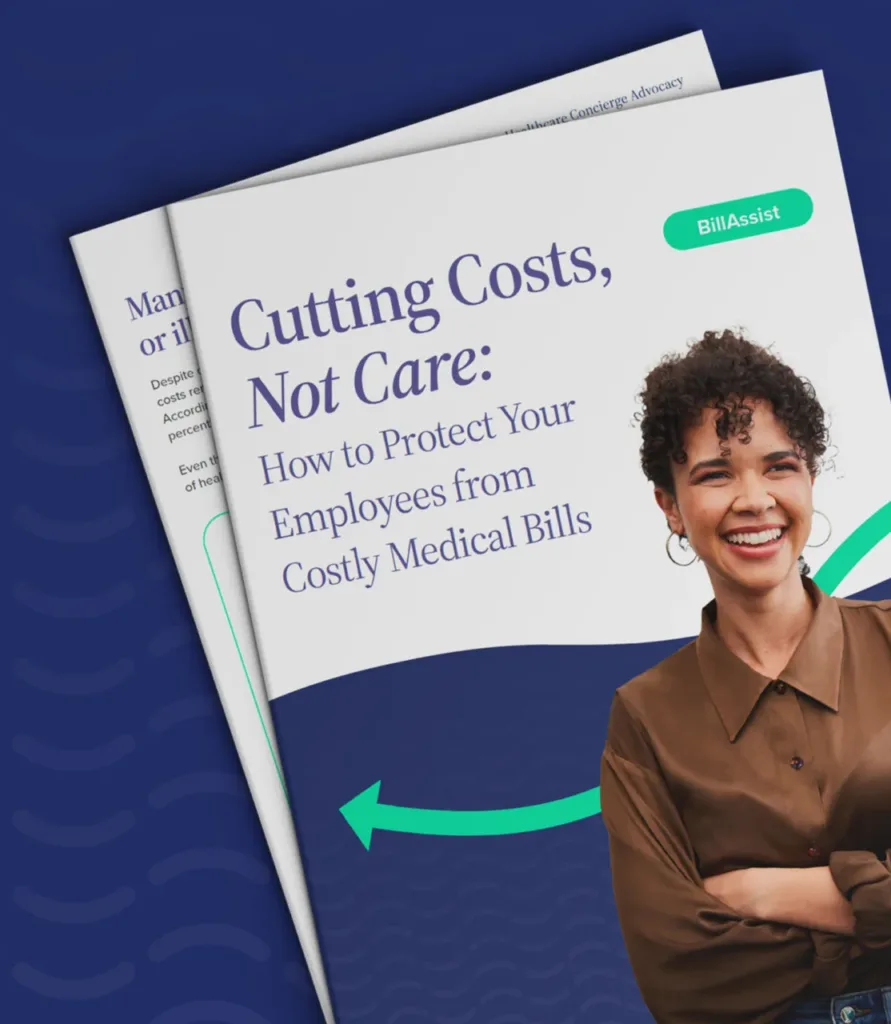Healthcare benefit costs aren’t just rising—they’re accelerating. Mercer’s national survey of more than 700 employers found that costs grew 4.5% in 2024, jumped another 5.8% in 2025, and are projected to climb even higher in 2026. To keep pace, more than half of employers say they’ll shift additional costs to employees through higher deductibles, steeper out-of-pocket maximums, or increased premium contributions.
The Financial Burden of Medical Expenses on Employees Is Growing
For employees, these decisions hit hard. In 2024, the average annual premium for employer-sponsored family coverage reached $25,572, with workers contributing over $6,000 out of pocket—a 7% jump in just one year. That squeeze is redefining household budgets. Families are cutting back on non-essentials, dipping into savings, and in some cases, delaying or forgoing care altogether. What used to be an occasional surprise bill is now a recurring source of financial stress.
Out-of-Pocket Costs and Deductibles Outpace Wages
The impact doesn’t stop at higher premiums. Deductibles have risen faster than wages for over a decade, leaving employees exposed to thousands in upfront costs before coverage kicks in. Prescription drug prices—both branded and generic—continue to outpace inflation. And for the three in four adults managing at least one chronic condition, ongoing expenses like medications and routine visits pile on month after month. These pressures compound quickly, turning one medical event into years of financial strain.
The Hidden Business Cost of Employee Financial Stress
Cost-shifting may balance the employer’s budget, but it comes with hidden risks. Financial stress is now one of the top drivers of employee disengagement and turnover. Workers struggling with healthcare bills are more likely to miss work, lower productivity, or leave for an employer offering better support. Mercer’s findings reinforce that affordability is no longer a “nice to have”—it’s central to maintaining a loyal workforce.
Why Affordability Must Be a 2026 Employer Priority
The real challenge for 2026 isn’t whether healthcare costs will rise—they will. It’s whether employers will help their people weather the storm once those bills hit their mailboxes.
Forward-thinking organizations are no longer limiting “cost management” to plan design changes or shifting contributions—they’re expanding their benefits strategy to include affordability tools that help employees navigate and reduce out-of-pocket medical expenses.
These include:
- Hospital Financial Assistance: Roughly 60% of U.S. households qualify for free or discounted hospital care under nonprofit hospitals’ financial assistance programs (per IRS 501(r) requirements), yet most patients don’t know these programs exist. Helping employees identify eligibility and apply can eliminate thousands in unexpected costs.
- Bill Review & Error Detection: Studies show that up to 80% of medical bills contain errors, from duplicate charges to coding mistakes. Independent review can uncover and correct these inaccuracies before employees pay for services they shouldn’t owe.
- Negotiation Support: When providers are approached by experienced advocates, bills can often be reduced by 30–60% on average, depending on the nature of the charges and facility type. Even insured employees with large deductibles can benefit from structured negotiations that convert a daunting lump-sum bill into a manageable balance.
- Affordable Payment Plans: For remaining balances, structured repayment options can make the difference between financial strain and stability. Interest-free or low-interest plans—especially those integrated with healthcare-specific financing partners—allow employees to pay off medical debt over time without resorting to high-interest credit cards or personal loans.
Employers that make this support accessible—either through navigation partners or integrated apps—help their teams reduce financial stress and focus on recovery instead of debt.
Beyond Plan Design: How to Support Employees with Medical Bills
Practical, employee-facing solutions are quickly becoming the new differentiator in health benefits. These services complement existing health plans without requiring structural overhauls, but they dramatically improve the employee experience.
By pairing technology with human advocacy, employers can empower their workforce to:
- Instantly check hospital financial assistance eligibility and complete applications seamlessly.
- Scan and verify bills for accuracy, catching costly mistakes that might otherwise go unnoticed.
- Negotiate for lower charges, resulting in thousands in average savings per hospital bill.
- Set up affordable, interest-free repayment plans that remove the burden of compounding medical debt.
As 2026 approaches, the employers that stand out won’t be the ones with the lowest premiums—they’ll be the ones with the most human approach to affordability. Helping employees navigate medical bills isn’t just compassionate—it’s smart business. When people feel financially protected, they stay healthier, more engaged, and more loyal to the organization that stood by them when it mattered most.
About the author: Nick McLaughlin is Vice President of BillAssist at Emry Health, a company committed to maximizing the value of healthcare investments and removing complexity to create better, lower-cost benefit experiences. With over a decade of experience in hospital billing and revenue cycle management, Nick is dedicated to breaking down systemic barriers to affordable care and helping employers integrate hospital debt relief solutions into their benefits strategies.





